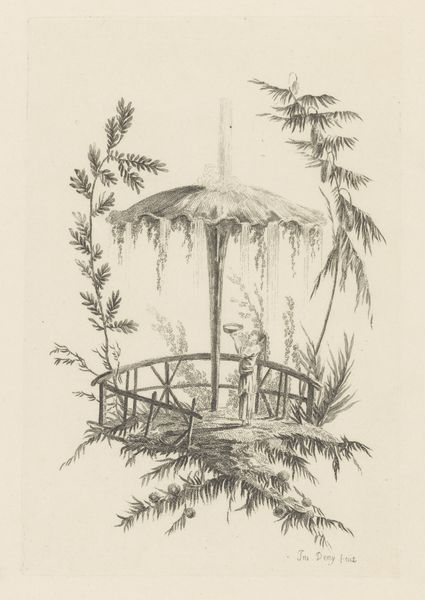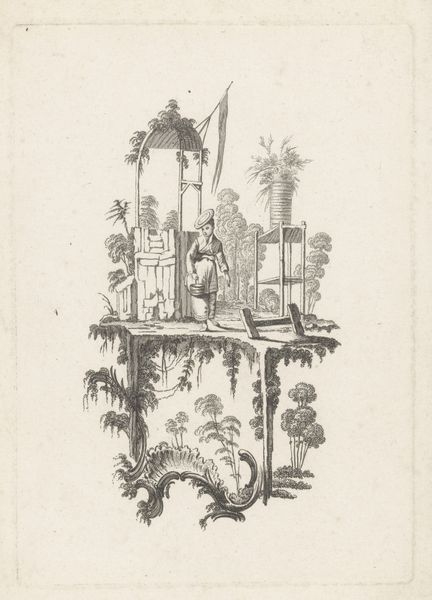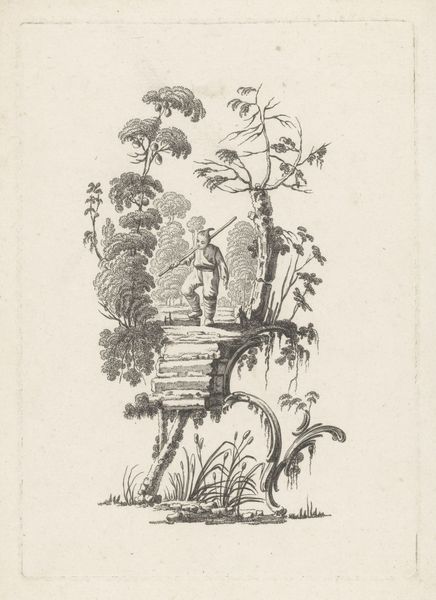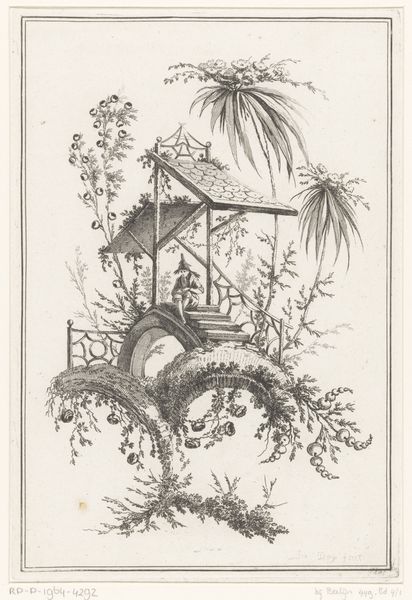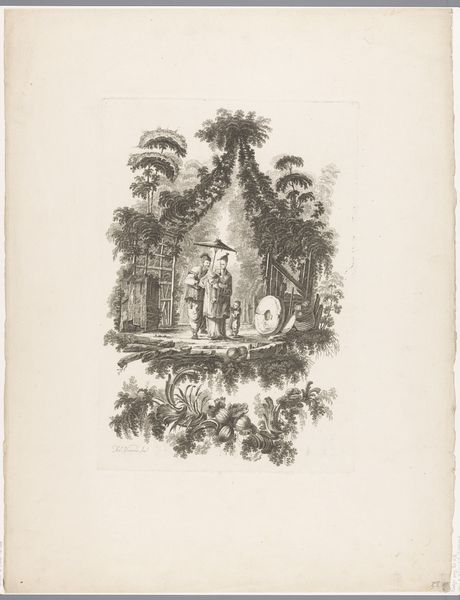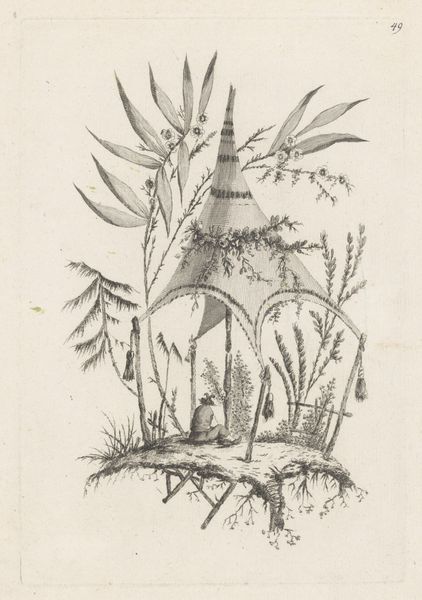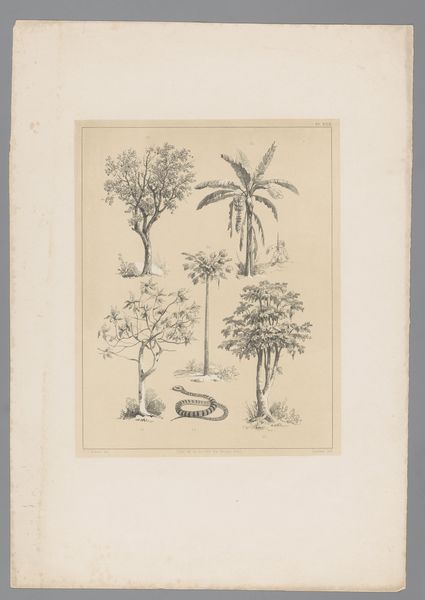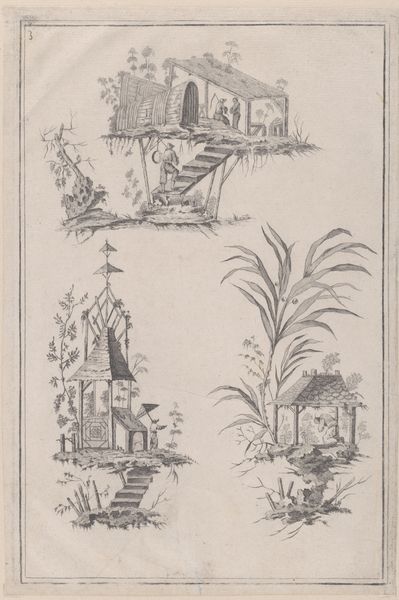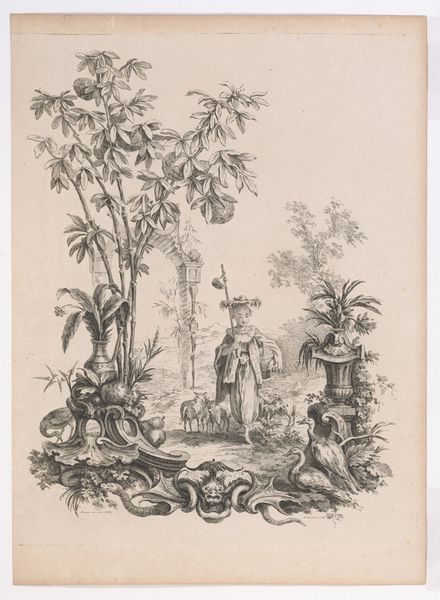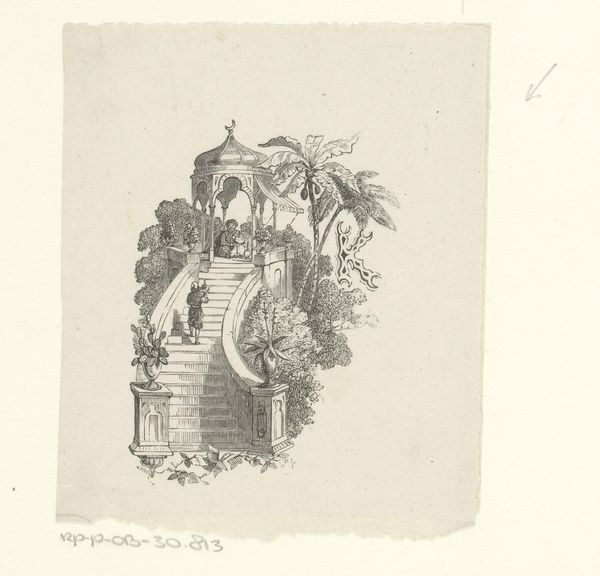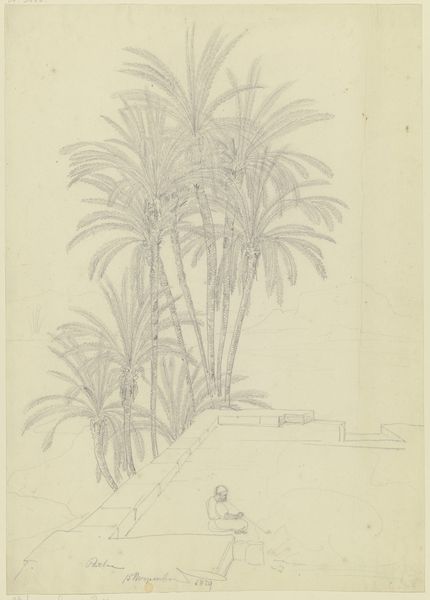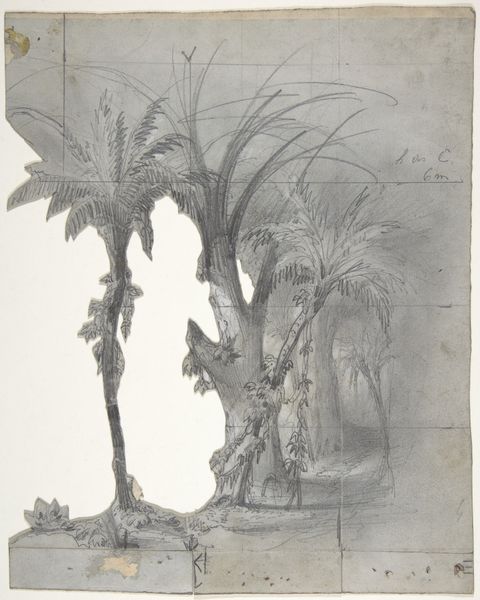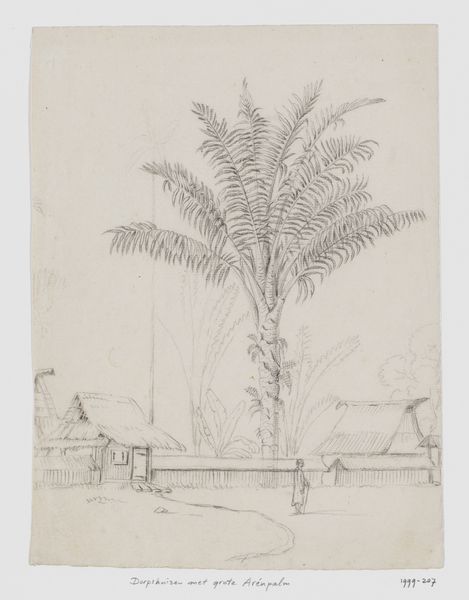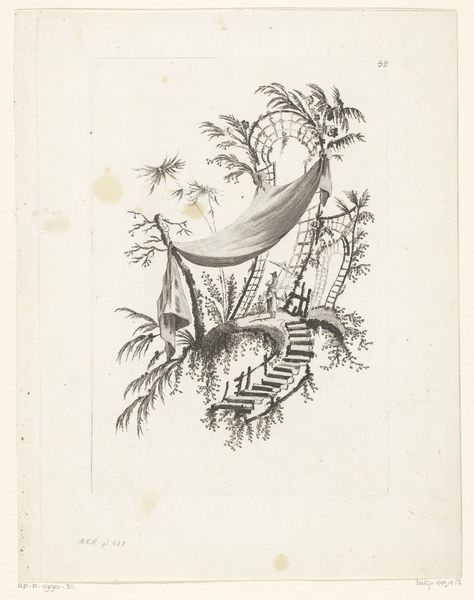
Dimensions: height 241 mm, width 164 mm
Copyright: Rijks Museum: Open Domain
Curator: This is Jeanne Deny’s "Fountain with Stairs", an etching made around 1770, currently residing here at the Rijksmuseum. What's catching your eye? Editor: The meticulous details of the print are striking. It evokes a fantasy stage set, complete with the artful manipulation of water and plant life. Curator: Yes, Deny’s prints circulated widely and give insight into how gardens and follies became fashionable focal points within elite social circles of the 18th century. These garden designs functioned as a means for displaying wealth and power. Editor: I am more drawn to the actual production. The use of etching allows for a delicate rendering of textures—the cascading water, the fronds of the palm, and the botanical detail of the foliage demonstrate craft. It really brings the scene to life. Curator: These idealized landscapes promoted a carefully crafted image of nature, aligning aristocratic taste with perceived control over the environment and reflecting socio-political hierarchies. Editor: True, but consider also the hand involved here; the labor of the artist transferring their vision into the physical reality of the plate. This piece wasn't stamped out by a machine; each line is a direct record of human activity. The artist's choice of etching, enabling intricate details through laborious application of acid to a metal plate... It emphasizes materiality. Curator: A print like this, distributed among wealthy landowners, certainly bolstered that notion. It fueled aspirations of recreating such scenes on a grander, lived-in scale, solidifying garden design as a statement of class and influence. Editor: Beyond that, though, isn’t there also the function of the print itself, allowing these grand displays of water and earth to be disseminated? Reaching potentially wider audiences through affordable reproductions democratizes it somewhat. Curator: Democratizes, perhaps, visually, but the social context is what intrigues me most. To grasp what this etching is really communicating you have to look beyond the surface appeal, don't you think? Editor: Indeed. It all layers so fascinatingly. It reminds you that artworks always hold multiple stories if we care to look closely.
Comments
No comments
Be the first to comment and join the conversation on the ultimate creative platform.
